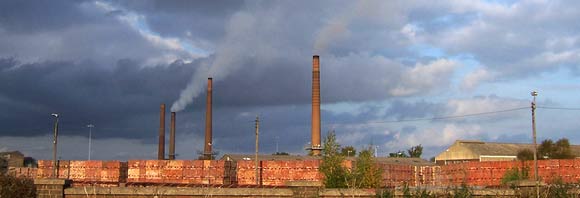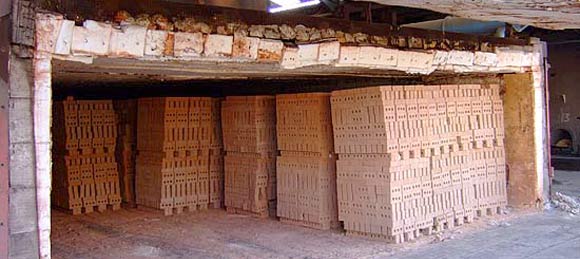History
.jpg)
The use of bricks in the Modern period stems from a revival of brick making in the late 13th – early 14th centuries in response to a combination of a shortage of local stone and the influence of Europe where brick was used extensively. By the middle of the 16th century, brick making had become a distinct industry competing with stone as a structural material.
As the industry grew, bricks became cheaper – leading to its travelling downwards through the social spectrum. With the introduction of the railways in the 19th century, significant consignments of brick could for the first time be transported from the brickfields, such as those in Bedfordshire, to the conurbations of London, the Midlands and the industrial North where they were used to build terraces for housing a rapidly expanding working class.
In the 20th century, mechanisation largely replaced making bricks by hand and this with other innovations helped fuel the building booms of the inter-war years and again in the 1960s and 70s following the rise in post war population.

Brick is a traditional building material. Heed is still paid to its almost unique quality of conveying a ‘genius locii’ upon any building built from local clay. Brick construction itself continues to be regarded and taught as one of the fundamental construction types of contemporary building, and the industry itself continues to flourish.
If the last few decades have brought opportunities through technological development, so too have they brought a new scrutiny in which fired clay bricks are examined against their environmental impact. Within the current debate concerning sustainable materials, brick is lined-up against a range of traditional and new materials. The brick industry will be hoping to match its strong credentials of durability with tradition against alternative forms of construction offering, particularly, reduced embodied energy.
Types of brick
Reclaimed bricks

With an estimated 2.5bn bricks1 resulting from demolition each year, it is not surprising that there is a healthy market in reclaimed bricks. More of a surprise might be in the knowledge that only 5% of the 2.5bn are actually reclaimed – 50% are crushed and used in hardcore and fill.
The Demolition Protocol states that bricks have a recovery potential of 10% - rising to 100% in some buildings.
But what restricts the current recovery of usable bricks is complicated, though two factors are salient: the uncompetitive pricing of reclaimed bricks compared with new units but also the (diminishing) quantity of bricks available from pre-1940s buildings which include lime rather than the harder modern cement mortars which are more difficult to remove from the brick.
However, there continues to be high levels of availability, with even large builders’ merchants now listed alongside the traditional specialist suppliers.
The quality of new bricks is governed by BS EN 771-1 applied to the manufacturing process, but this, as might be expected, is a standard unavailable to reclaimed bricks. Samples from a batch of reclaimed bricks can be tested, but the results cannot be extended to establish the overall quality of the consignment. However, suppliers can go far in providing assurances and this combined with modest assumptions about the likely performance of the bricks can result in successful use.




